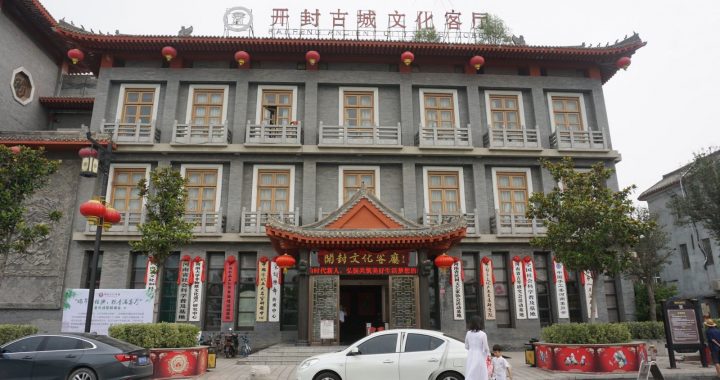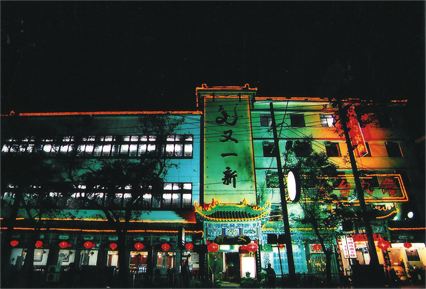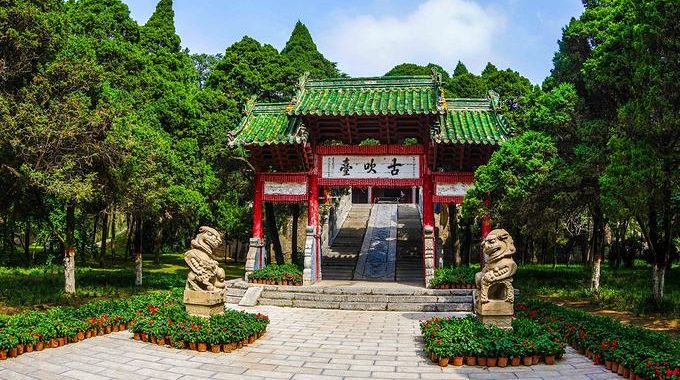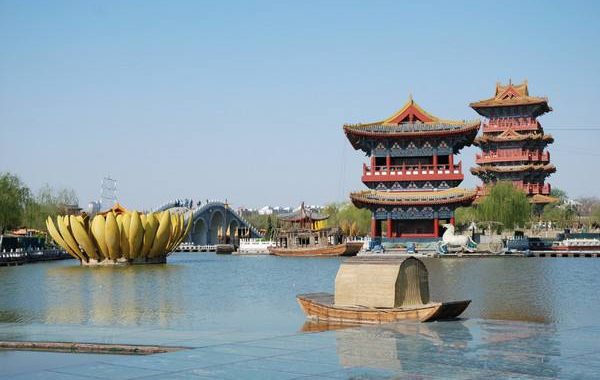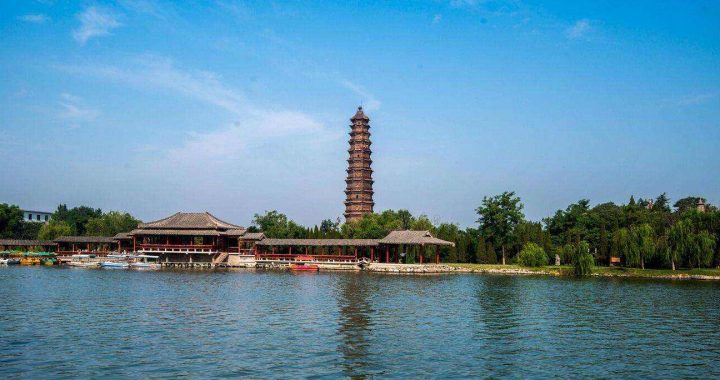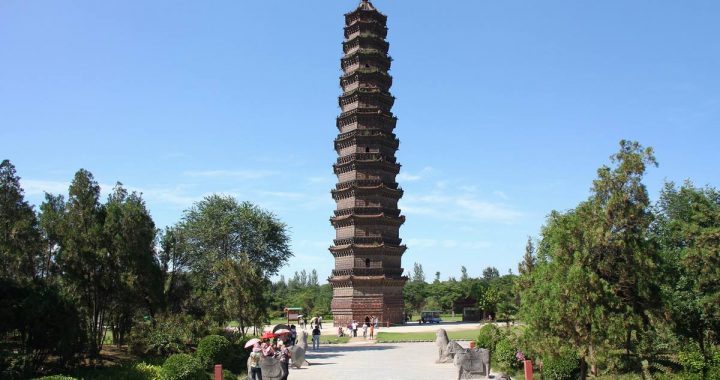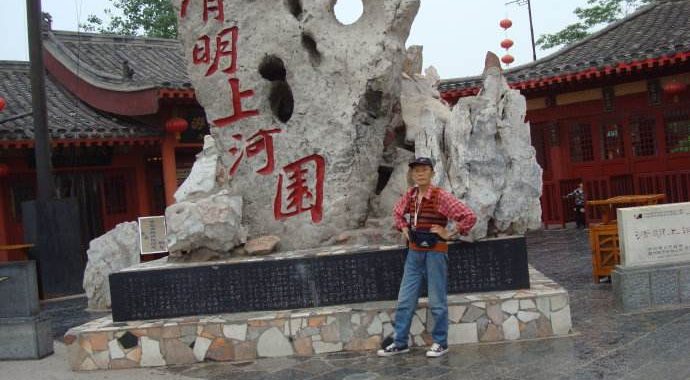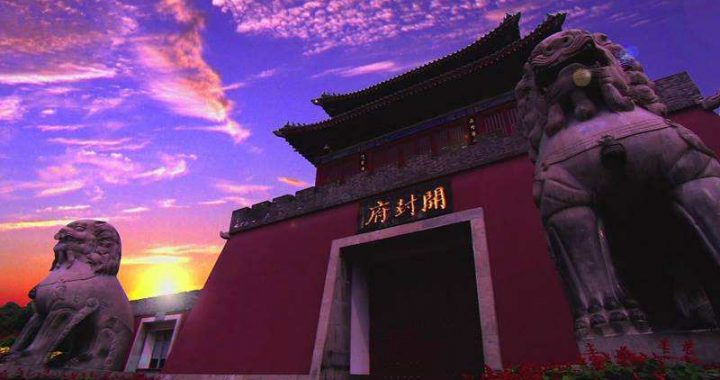Historical Relics
5 min readWith a history of more than two thousand years, Kaifeng is sure to boast numerous historical relics. However, having gone through so many wars and natural disasters, most of them are rebuilt ones based on the original.
Kaifeng was flooded by the Yellow River several times in history and the places where the Imperial Palace and the Kaifeng local government used to be have changed into lakes long before. How does that come? When the overflowing Yellow River made its way to the city, it washed away all the buildings except the firm city walls ofthe Imperial Palace and the walls surrounding the government office. Later when the floods abated, mud and sand silted up along the wall, making the inside of the Imperial Palace and the local government much lower than the outside. Thus by and by, those palaces changed into the Yangjia Lake and the Panjia Lake where the Imperial Palace used to stand as well as the Bao Gong Lake around where the feudal local government used to be.
Dragon Pavilion
Northwest of today’s Kaifeng there used to stand the capital city of the Northern Song dynasty-Bianjing. Magnificent as the imperial palaces were; wars and floods reduced all of them to ground, only leaving the Dragon Pavilion to tell the stories of past times. Standing high on a platform and facing south, the pavilion was built in the Qing dynasty.A set of stone stair carved with clouds and dragon leads to the top. On the stair, there are horse hoofprints which are said to be lef when the first emperor of the Song dynasty Zhao Kuangyin climbed onto the pavilion on a horse. The pavilion is of a wood structure and has a double nine-ridged roof decorated by golden glazed tiles which reflect the impressive and dignified manners of the royal family. Standing on the platform of the pavilion, tourists could overlook the Iron Tower that stands just opposite and the whole old Kaifeng city. In front of the Dragon Pavilion, there lies a straight road, on the two sides of which are the Yangjia Lake and the Panjia Lake respectively. Legend goes that since the Panjia Lake is where the mansion of the wicked official Pan Renmei used to be, thewater of the lake is muddy; while the water of Yangjia Lake is always clean for it is where the mansion of the loyal Yang family was.
Dragon Pavilion
Iron Pagoda
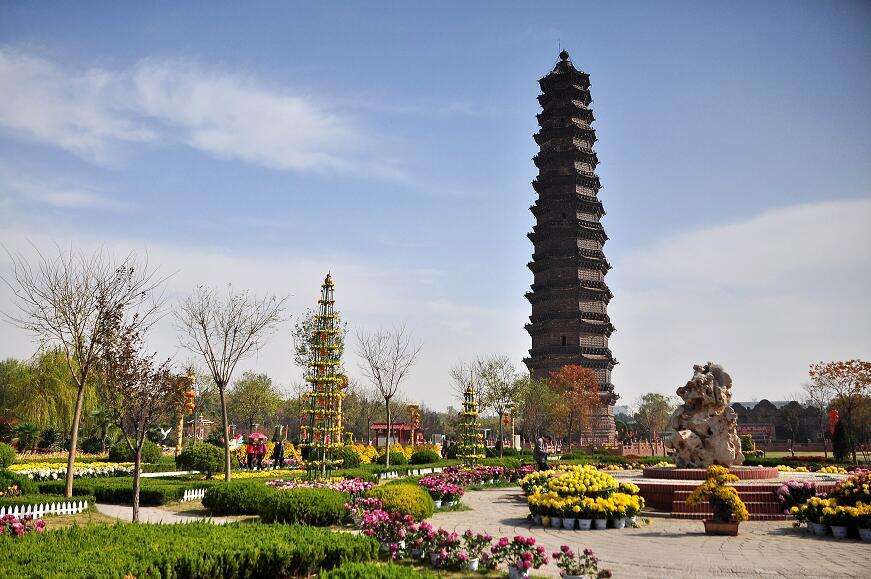
Situated at the northeast corner of Kaifeng, the Iron Pogoda was originally a thirteen-storied wooden tower built in Northern Song. It was also called Kaibao Temple Pagoda for it was built in the Kaibao Temple. Later, the pagoda was struckdown by lightening. In 1049 the ruler of Northern Song ordered to rebuild it and cover its body with brown glazed tiles. Thus the pagoda got its present name”Iron Pagoda”for it seemed to be built with iron when looked at from a distance. The pagoda takes on an octagonal shape. It used to have a seat and an eight-edged pond under the seat, but they were buried under the ground by floods in the Qing dynasty.
The brown glazed tiles that cover the body of the pagoda are carved with more than fifty types of designs. So lifelike are the carvings that they may well be called art treasures. Since the pagoda was built to be shockproof, it survived a number of earthquakes and floods. It is said the pagoda was built with a 15 degree of sloping to the northwest for the architects believed the terrain of Kaifeng was sure to change years later for there were mainly mud and sand under the land of Kaifeng.
Their judgment proves to be correct. Nowadays, the pagoda indeed begins to slope towards southeast.
Xiangguo Temple
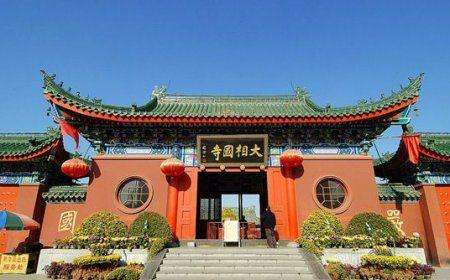
A temple of historical significance in Kaifeng and a temple of fame in China, Xiangguo Temple was originally the private mansion of Prince Xinling in the Warring States period. In the Northern Qi dynasty,a temple named as Jianguo Temple was built where the mansion was but was burned down in the flames of wars. In the Tang dynasty,a new temple was built in this place. Originally named after the one in Northern Qi, the temple was renamed the Grand Xiangguo Temple, or Xiangguo Temple.
Inside the temple there are exquisite murals and statues as well as tall and grand halls including the Hall of Heavenly Kings, the Hall of Sakyamuni, the Octagonal Glazed Hall and the Hall of Sutra. Inside the Octagonal Glazed Hall, there stands a seven-meter high statue of the 1000-Armed-and-1000-Eyed Avalokiteshvara. Carved out of a huge ginkgo tree, the fine statue is a treasure of the Buddhist art and sculpture. In the temple, there is also a drum tower and a bell tower. In the bell tower there hangs a bell which was founded in the Qing dynasty and is four metershigh and more than 5,000 kilograms heavy. For visitors, Xiangguo temple is not only a place where they can see for themselves the historical relics but also a place where they can pray for safety and happiness.
Po Ta
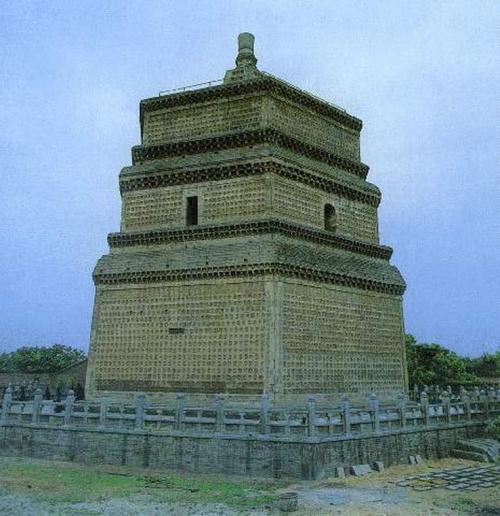
To the southeast of Kaifeng, there stands Xingci Pagoda. Since it is constructed on a terrace called Po, it is widely known as Po Ta (“Ta’ in Chinese means pagoda).
First built in the early Northern Song dynasty, the pagoda had nine stories but only three were left by the end of the Ming dynasty. Later, another six-storied mini-pagoda was added to its top, making the pagoda a very unique one. Seven meters high.
the newly added mini-pagoda resembles a new sprout transplanted to a bulky trunk.
Under the eaves, there is carved corbel bracket. The outside of the pagoda is inlaid with bricks carved with Buddhas of different images.
Yanqing Taoist Temple
One of the renowned Taoist temples in China, Yanqing Taoist Temple was originally named Chongyang Taoist Temple in honor of Wang Chongyang, the founder ofthe Quanzhen sect of Taoism in China. So dilapidated was it that the ruler of earlyMing dynasty reconstructed it and gave it its current name. Most of the buildings ithe temple were destroyed in the many floods that ravaged Kaifeng, leaving the Hall of Jade Emperor standing there alone. Built with grey bricks and on a square pedestal, the three-storied stairless hall is of a delicate and unique structure, reflecting both the Han culture and the Mongolian culture. Inside the hall, there sits a white jade statue of Jade Emperor.
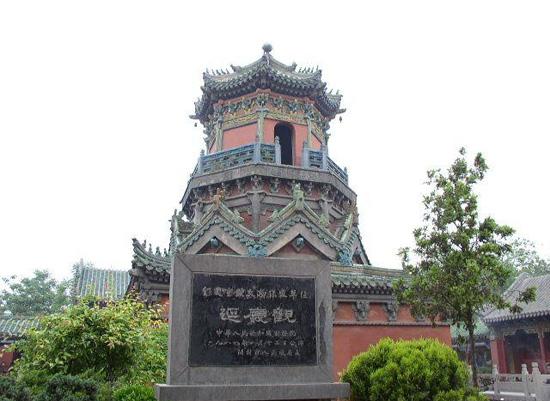
In addition to those historical relics, the peculiar local food is also of great appeal to both Chinese and foreign visitors. Among the famous are the steamed meat-stuffed bun, tongzi chicken, stewed grass carp and peanut cake.
